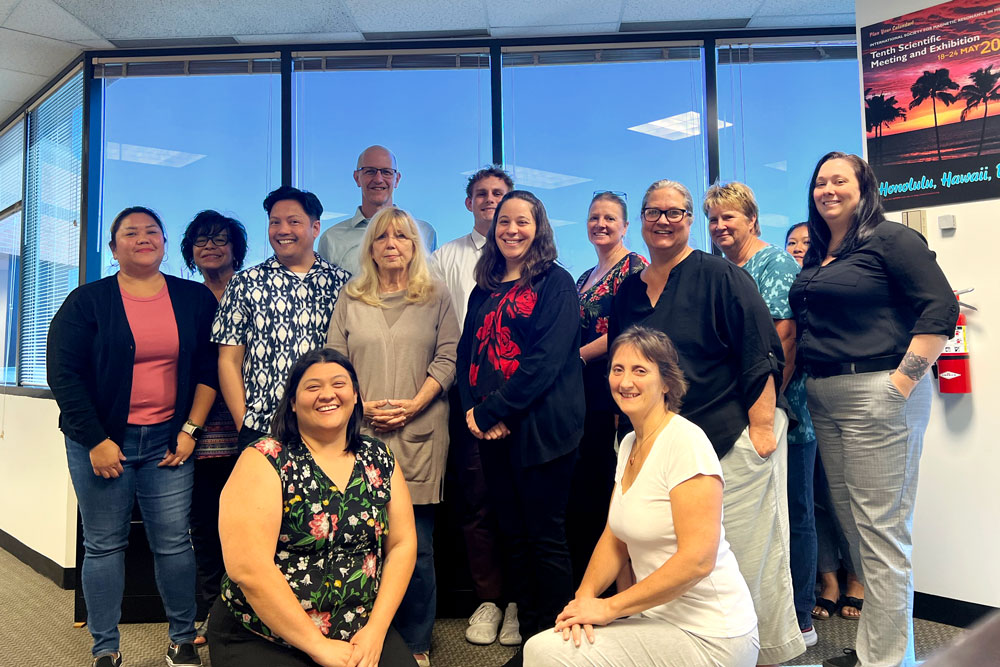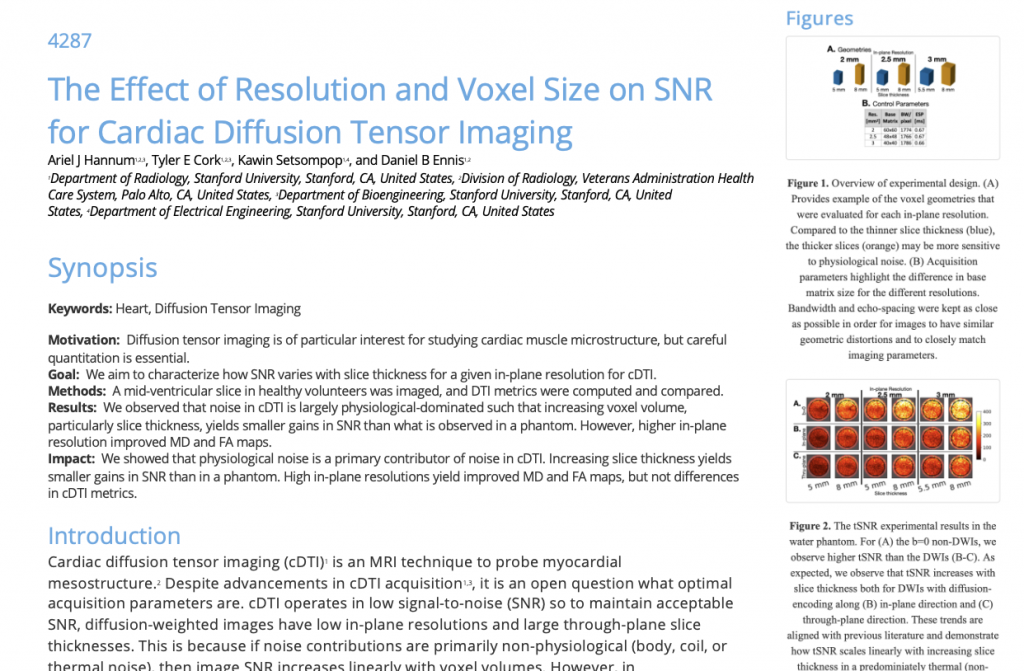
Singapore 2024: It’s Abstract Time!
Remember 2016, when ISMRM was last in Singapore? Mark Griswold brought us HTML abstracts, Jim Pipe led off the emphasis on MR value, we saw the first presentations of deep learning applied to MRI. Much has happened in eight years, but one thing has not changed: November is ISMRM abstract time!
At the Central Office, the dedicated staff have been busily preparing everything for the opening of abstract submission on 03 October. We heard your survey feedback from Toronto and plan to offer a program format that retains the best of ISMRM while continuing to evolve.  Abstracts will look familiar, but a few changes will help YOU to communicate your great science and YOU, our attendees, to navigate the incredible breadth of work that will be presented. Here is a preview:
Abstracts will look familiar, but a few changes will help YOU to communicate your great science and YOU, our attendees, to navigate the incredible breadth of work that will be presented. Here is a preview:
Oral sessions will return to a 9+3 minute format based on member feedback. The program committee will take extra steps to make these prestigious sessions more coherent and topical, including short introductory lectures and moderator-led discussions in certain sessions. Power pitches will be mostly unchanged, but we are fortunate to be able to offer three power pitch theaters in Singapore, with capacity for over 600 abstracts in this format.
Digital posters (E-posters) will be redesigned, mostly to enhance the interaction with audience members at different levels of detail and to better facilitate browsing during the conference (more information to come!). 2023 Program Chair Nivedita (Niv) Agarwal brought back traditional posters in Toronto, and they will be an option in Singapore 2024. You can you’re your preferred presentation formats, which the Program Committee will try to honor where possible.
Synopsis & Impact: This year we introduce a structured synopsis and impact statement. The structured synopsis and impact will help convey the science and potential impact in a more specific and consistent way than in prior years. Why this emphasis?  We all pursue research to have an impact. But as we focus on presenting our work, we sometimes lose sight of the specific end goal. We want to convey to each other what motivated our projects, what we did, and why it will matter. This will enhance our conversations together – thinking this way will help in any networking situation, framing manuscripts and proposals, and design of future studies for impact. Write your synopsis and impact statement for a broader audience than your specialty area, and try writing it early, as this will help you write a better abstract! If you are curious, the final abstract will look something like what is shown here. (This initiative is together with Kei Yamada and Katy Keenan, program chairs for 2025 and 2026, and Deb Burstein who led the “IMPACT” workshop in Toronto.)!
We all pursue research to have an impact. But as we focus on presenting our work, we sometimes lose sight of the specific end goal. We want to convey to each other what motivated our projects, what we did, and why it will matter. This will enhance our conversations together – thinking this way will help in any networking situation, framing manuscripts and proposals, and design of future studies for impact. Write your synopsis and impact statement for a broader audience than your specialty area, and try writing it early, as this will help you write a better abstract! If you are curious, the final abstract will look something like what is shown here. (This initiative is together with Kei Yamada and Katy Keenan, program chairs for 2025 and 2026, and Deb Burstein who led the “IMPACT” workshop in Toronto.)!
Categories: Pay close attention to selecting abstract categories, which are used to assign reviewers, to sort abstracts into scientific sessions, and of course for attendees to search the proceedings. For 2024, you will select a primary category/subcategory pair and a secondary category/subcategory pair, then general and other keywords. Approximately half the abstracts listed a completely different primary and secondary category; the strong connection between basic methods and applications to discovery and clinical practice is typical of ISMRM! This year, we will match reviewers to both primary and secondary category/subcategory pairs so that your work reaches a broader audience. And please, please sign up to be an abstract reviewer!
In my next blog, I will talk a little bit about some of the highlights of the meeting. You can take a sneak peek at the preliminary Program-at-a-Glance, and then get back to working on those abstracts!
Brian Hargreaves, Ph.D.
2024 Annual Meeting Program Chair





Very exciting! Well done and thank you for the efforts 🙂